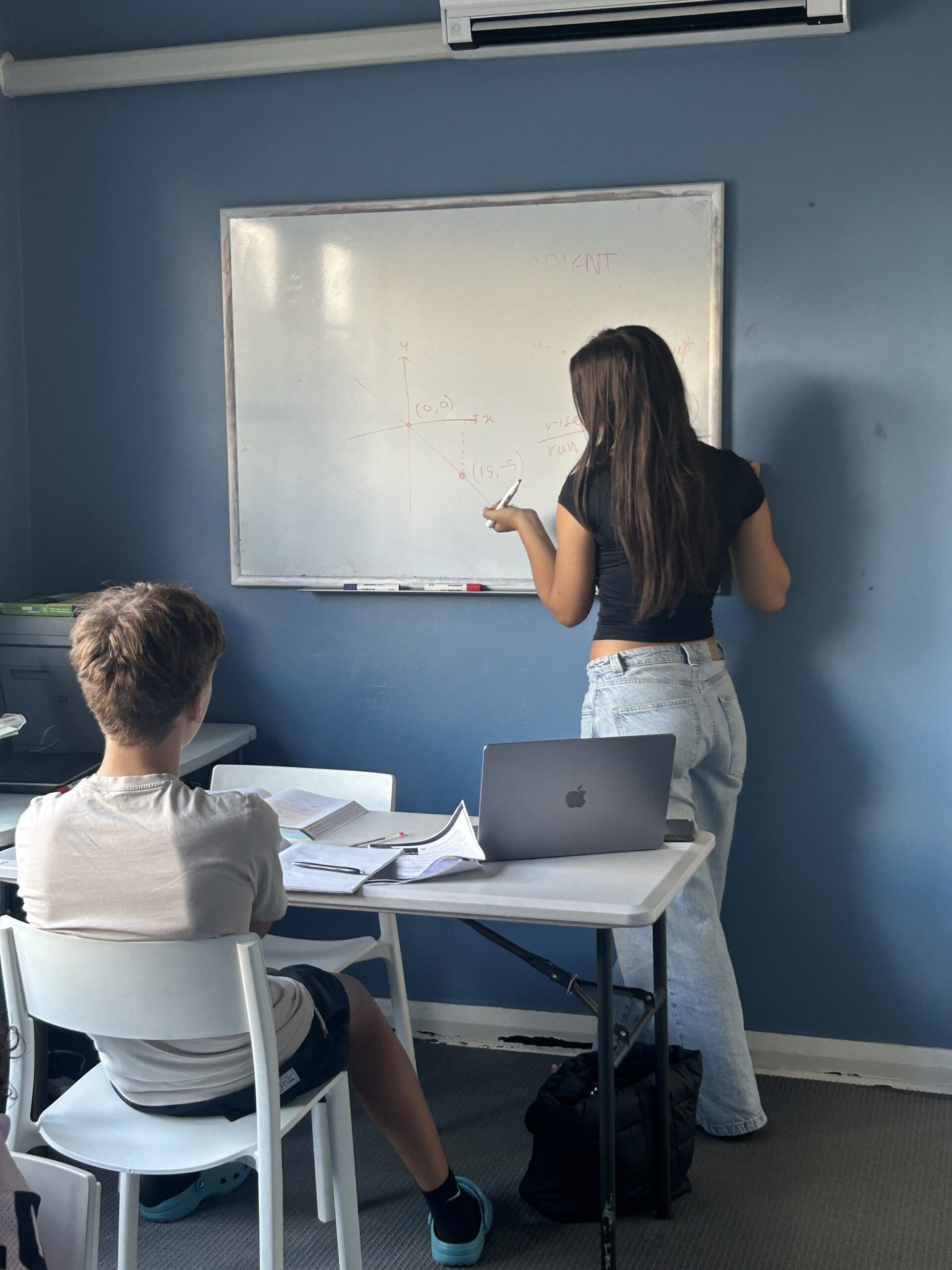
This afternoon, I had the chance to sit in on Demetria’s session with Harper, a Year 10 student working on maths. They started by going over some tricky homework questions from last week, where Harper had to sketch linear expressions. Demetria got Harper to explain his thinking first, helping him spot where he went wrong on his own. This approach really seemed to help, as Harper was able to correct some of his errors without too much guidance.
After clearing up the homework, they moved on to revising gradients and the idea of rise over run. Demetria made sure Harper understood why the gradient formula works rather than just memorising it. They spent some times looking at negative vs positive gradients, and what that actually looks like on a graph. She used simple, clear examples and had Harper talk through how he would find the gradient of different lines. When he got stuck, she asked guiding questions to help him connect the numbers to what was happening on the graph. Once he had a better grasp of gradients, they moved on to graphing full linear equations. Demetria had Harper try a few on his own, reminding him to double-check key points before sketching the line. Instead of jumping in when he hesitated, she gave him time to think and only stepped in with hints when needed. As the session went on, Harper started working through problems more quickly and with greater confidence.
In the second half of the session, they shifted focus to rates and how to interpret them from graphs. Demetria explained how rates relate to gradient, helping Harper see the connection between the two topics. She used real-world examples, and worked through a few problems where Harper had to read and compare rates from different lines. By the end, Harper was much more comfortable identifying rates from graphs and understanding what they represented.
To wrap up, Demetria had Harper go back to one of the homework questions he had struggled with at the start of the session. This time, he was able to solve it correctly without help, which showed how much progress he had made. They also discussed a few strategies to help him stay organised and avoid small mistakes when working under time pressure.
Overall, it was a really productive session. I feel like Harper left with a much stronger understanding of gradients, graphing, and rates, and I picked up some great strategies from Demetria that I can use in my own sessions. Thanks
Eric Mihas

